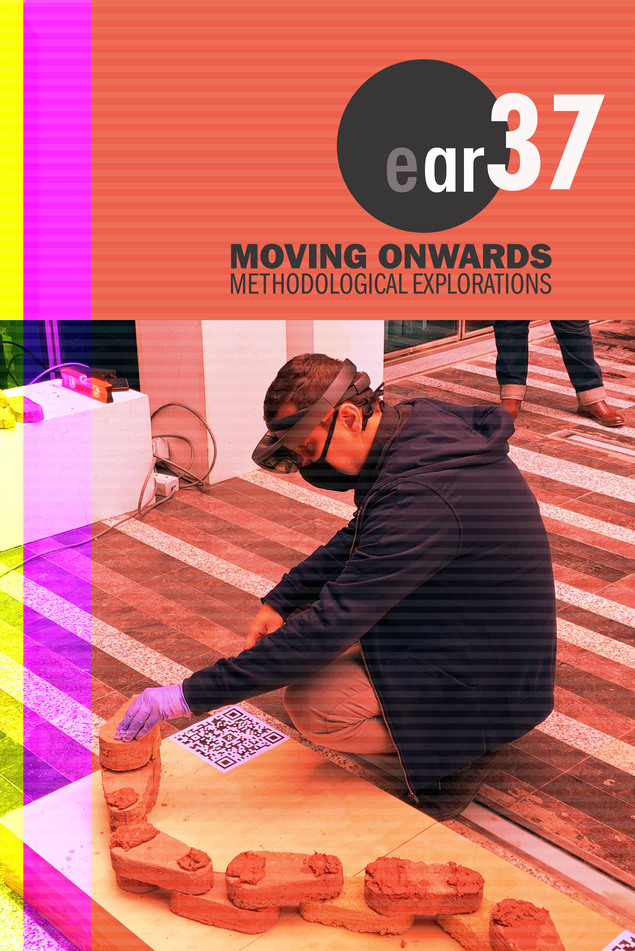Digital Imperfection
Earth brick construction supported by mixed–reality technologies
Abstract
Digital Imperfection was a temporary installation at the German University in Cairo (GUC) that combined the use of mixed-reality tools and earth as a sustainable and multifaceted material. The project involved two separate processes that came together during the final montage procedure: on the one hand, the design of handmade earth bricks, and on the other, the design of a parametric wall and the coding of the montage procedure on the mixed-reality platform.
The project aimed to reconnect both students and a wider audience with a traditional craft through the use of modern digital tools. Hand-crafted bricks were stacked to create a wall with the help of a HoloLens device, which overlaid a digital four-dimensional model over the physical world. Despite the mediation of digital apparatus, the aim was to engage participants in a comprehensive workflow that involved aspects of both handmade production and interactive assembly, rather than promoting a mere robotic process. During the research phase, we investigated the relationship between high-tech and low-tech tools through the following questions:
• How can we incorporate digital technology without losing human interaction?
• How can we measure and account for manufacturing imperfections?
• How can we minimise those imperfections within the design and its montage?
• What benefits and opportunities are offered by the combination of low- and high-tech techniques?
The process accounted for various imperfections and height irregularities (resulting, for example, from differences in mortar thickness or manufacturing), sustaining a constant loop with real-time feedback: the physical model was updated with new bricks while the digital model was updated with height corrections.
The research offers multiple benefits. Firstly, it introduces students (and a broader academic public) to the use of sustainable materials in combination with parametric design. Secondly, it produces a digitally-designed installation (of relative complexity) without the need for printed documentation. Finally, it demonstrates a resource-saving method in which both building procedure and instructions are entirely virtual, eliminating the need for framework or printed plans.
Digital Imperfection puts humans at the centre of the digital assembly process; humans are not replaced by robots or algorithms but instead collaborate with them in ways that maximise the advantages they offer.


